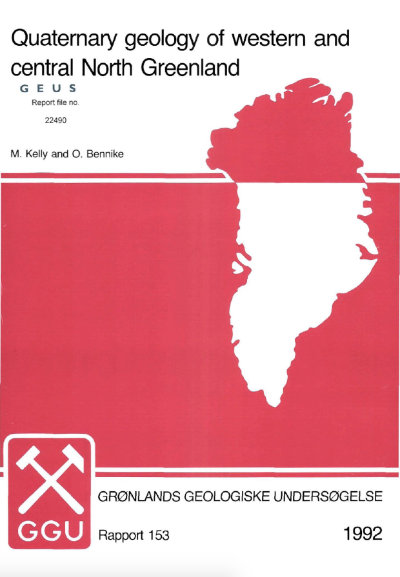Quaternary geology of western and central North Greenland
DOI:
https://doi.org/10.34194/rapggu.v153.8164Abstract
The earliest Quaternary event represented is the Kap Bryant glacial stade of probable Saalian age, in which an ice sheet covered the area out to the shelf. In contrast, in the Late Weichselian Kap Fulford stade, the area was only partly glaciated, with outlet lobes from an ice sheet occupying the outer fjords. There is some evidence of an earlier (Early Weichselian?) slightly more extensive glaciation (Kap Sumner stade). In the early Holocene, the ice margin had retreated to the middle regions of the fjords and extensive glacial lakes were formed in intervening areas. The Late Holocene Steensby stade produced a readvanee of the ice sheet at the head of the fjords and the growth of local ice caps. Reworked marine fossils in glacial sediments define the Hall Land marine event of Eemian and/or Early Weichselian age. The Late Weichselian/Holocene marine event (Nyeboe Land event) is abundantly represented by deposits whose distribution shows that the limit of transgression varied over the area, with a maximum at about 125 m above sea level. Regression from this limit occurred during the Holocene, initially at a slow rate. The fossil biota are described from the marine sediments and from a small number of terrestrial occurrences.
Downloads
Published
Issue
Section
License
This article is distributed under a CC-BY 4.0 licence, permitting free redistribution and reproduction for any purpose, even commercial, provided proper citation of the original work. Author(s) retain copyright over the article contents.


